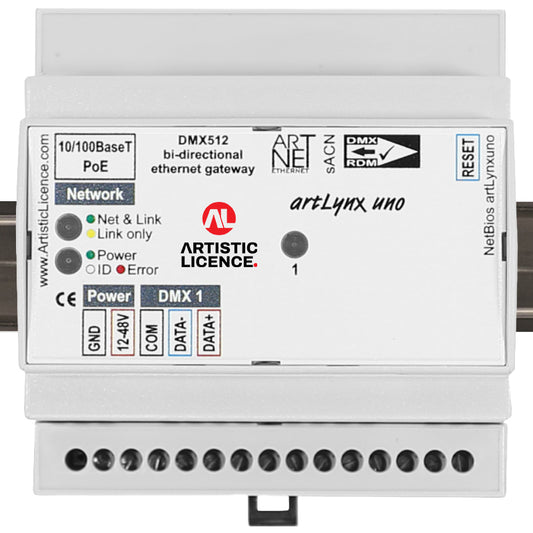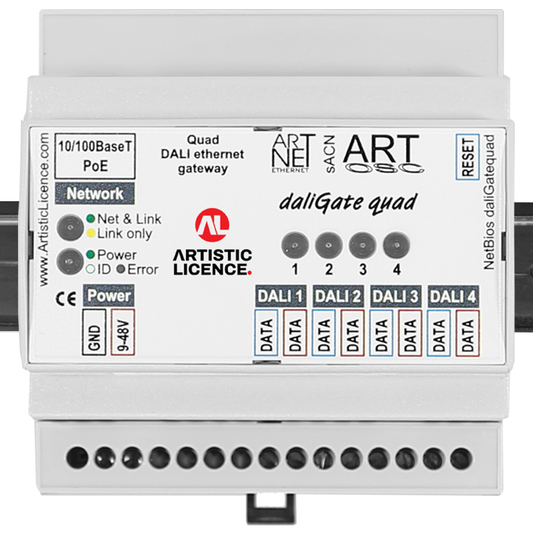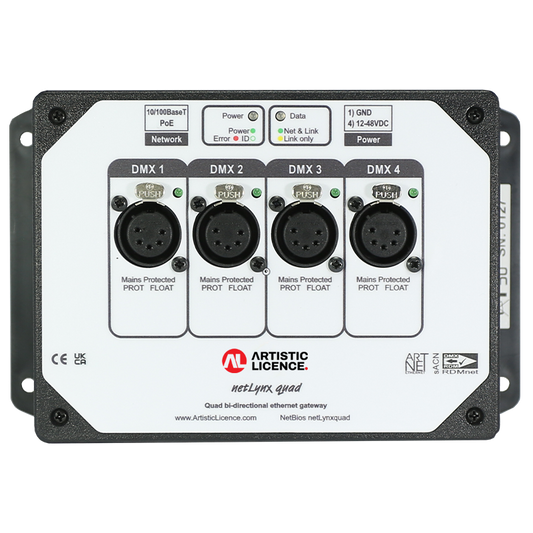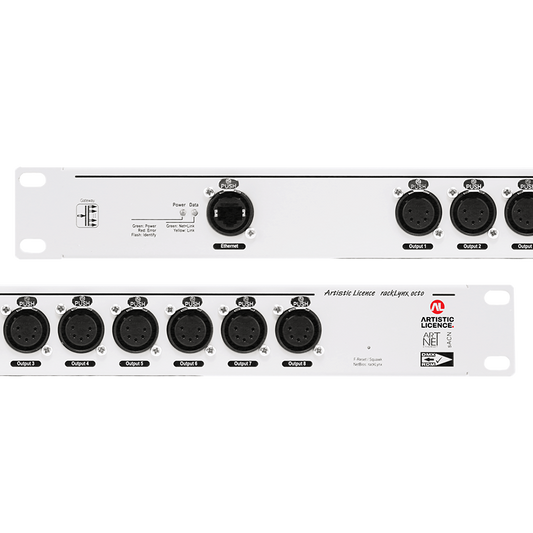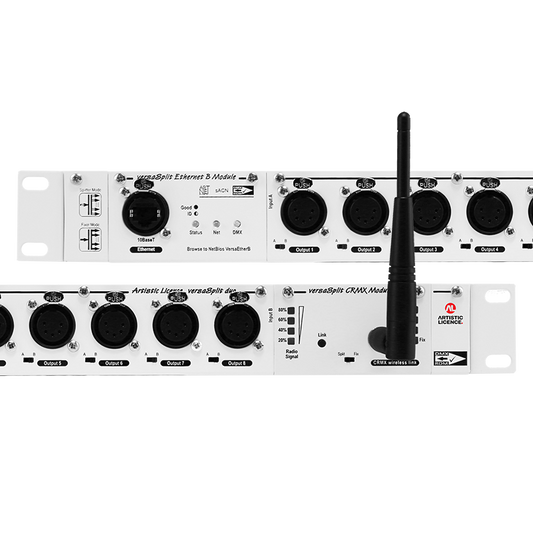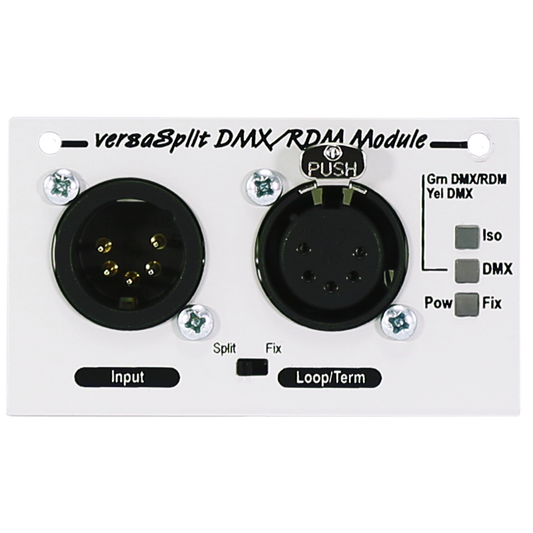Art-Net
Art-Net is an award-winning protocol that allows DMX512 and RDM lighting data to be transported over an ethernet network.

Art-Net is owned and copyright by Artistic Licence Engineering Ltd.
Artistic Licence has published the specification and made it available for anyone to use on a royalty-free basis, subject to conditions.

Light Bytes
Written with practicality in mind, Light Bytes provides a much needed technical reference on Art-Net and sACN. Starting with a networking primer, it moves onto the detailed packet structures and definitions used in each protocol. Following the theoretical groundwork, readers are guided through the problems that are often encountered in real-world applications, with tips on how to avoid them.
View full details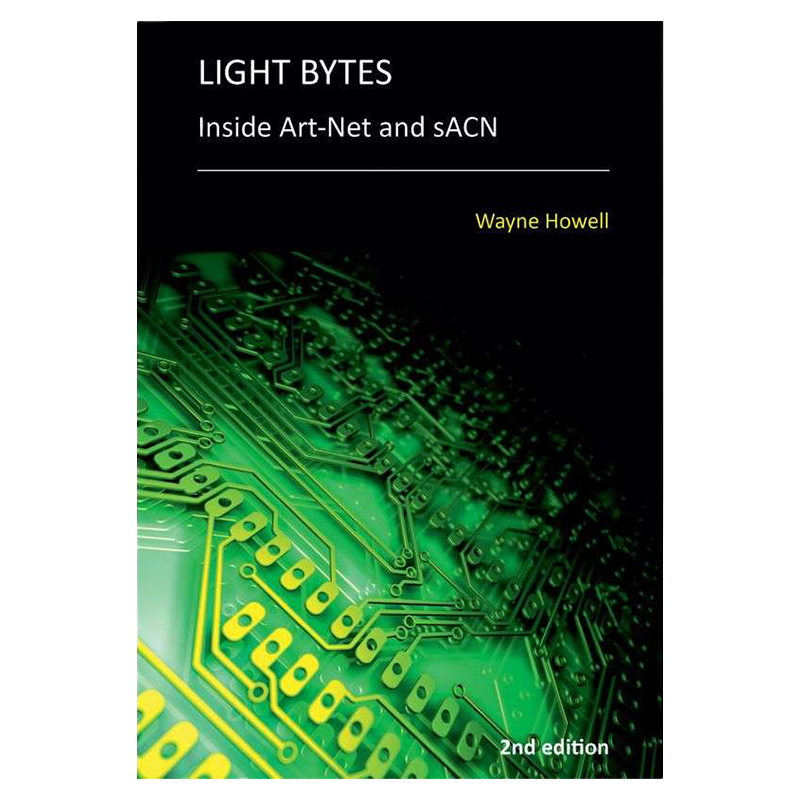
Art-net
Overview
History
DMX was designed to control up to 512 channels (a universe) of lighting values over a single cable. It worked well for many years but eventually outgrew its 512 channel limit, and lighting desks supporting several DMX universes began to appear. Soon, even this was not enough as the development of channel hungry fixtures progressed and designers needed more channels than DMX could offer.
Art-Net was created by Artistic Licence to overcome the channel restriction of DMX while still utilising its structure. It allows multiple DMX universes to be transported over a single Cat5 cable using ethernet technology.
In the early days, DMX signals from a lighting desk were converted to Art-Net using a separate interface product. The signals were then transported over an ethernet network and converted back to DMX before entering each fixture. However, manufacturers quickly saw the benefits of Art-Net and started to support the protocol in their new lighting controllers. As a result, native support for Art-Net in consoles, dimmers and moving lights is now quite common, so increasingly the DMX512 universe is a virtual concept.
Art-Net I
The first version of Art-Net, now called Art-Net I, was written in 1998 and released soon after. Art-Net I used broadcast data for all transactions including the streaming level data. The reason for the use of broadcast was simply to remove the need for any network configuration on the part of the user.
Art-Net I was implemented on 10BaseT networks and used for a relatively small quantity of universes – perhaps 10 (the effective limit was approximately 40 universes). This very modest level of bandwidth use worked well with a broadcast topology.
However, with the wide scale adoption of RGB LED devices, the demand for channels grew and the broadcast topology became problematic. Broadcast data floods the entire network and appears at every node whether it needs it or not. Too much broadcast data overloads switches and nodes alike.
Art-Net II
In order to address this problem, Art-Net II was released in 2006. At power on, the Art-Net II output of a console is identical to Art-Net I – all broadcast. However, with Art-Net II, the console uses a simple algorithm to learn which nodes are consuming which universes. It then switches to unicasting to the nodes. The reduction in network loading achieved with Art-Net II is massive, allowing Art-Net II networks to scale up to the bandwidth of the
network. Art-Net II has an effective limit of 256 universes.
Art-Net 3
The need for ever more channels, driven by the expansion of pixel based systems, continues unabated. This led to the release of Art-Net 3 in 2011. Art-Net 3 increased the number of universes that can be addressed from 8-bit to 15-bit (meaning that a total of 32,768 universes can be addressed). Art-Net 3 added a concept called Binding, which allows product designers to develop gateways with more than four ports. However, each logical block of four ports must have a unique IP address, which can be difficult to implement on some hardware platforms (the use of multiple IP addresses is called
multi-homing).
Art-Net 4
Art-Net 4 was released in September 2016. It is the most powerful and flexible version to date and, in recognition of this fact, gained a PLASA Award for Innovation.
Art-Net 4 overcomes the multi-homing problem, by incorporating a new method of handling gateways that support multiple DMX ports. The scheme allows a gateway (or any Art-Net product) to support over 1000 DMX ports, all on a single IP address. It has been added in such a way that it is 100% backwards compatible with previous releases of Art-Net.
Art-Net 4 also offers a unique new feature that facilitates management of the gateway data source. This allows users to choose Art-Net as the discovery, management and RDM tool, while using sACN for the live control data. While many users are happy to work completely within the Art-Net realm, some installations and specifiers require or prefer the use of sACN, the accredited ANSI E1.31 standard. However, unlike Art-Net, sACN does not support network management or RDM, which could leave users disadvantaged. Art-Net 4 solves this problem, offering an elegant solution that enables the protocols to be used in a complementary manner.
Developers will also appreciate a new software feature that enables all DMX ports to be assigned a fully independent universe.
Art-Net 4 also has built-in support for VLC (Visible Light Communication).
View the range
-
artLynx range
Regular price From £295.00 GBPRegular priceUnit price / per -
daliGate quad
Regular price £495.00 GBPRegular priceUnit price / per -
netLynx quad
Regular price £495.00 GBPRegular priceUnit price / per -
rackLynx octo
Regular price £485.00 GBPRegular priceUnit price / per -
versaSplit duo
Regular price £795.00 GBPRegular priceUnit price / per -
versaSplit mini
Regular price £795.00 GBPRegular priceUnit price / per -
versaSplit modules
Regular price From £50.00 GBPRegular priceUnit price / per -
versaSplit mono
Regular price From £695.00 GBPRegular priceUnit price / per

